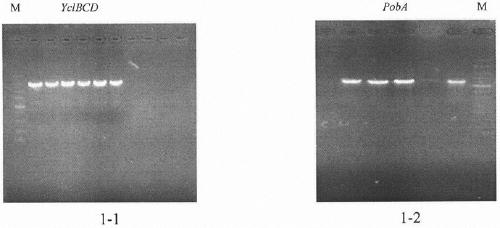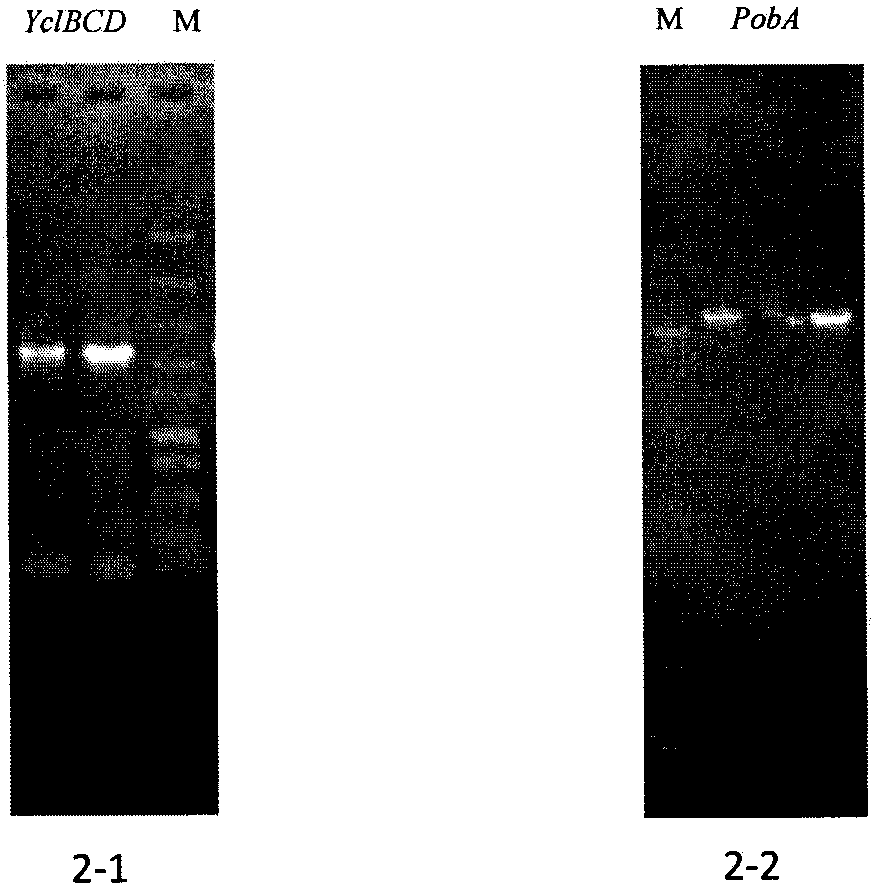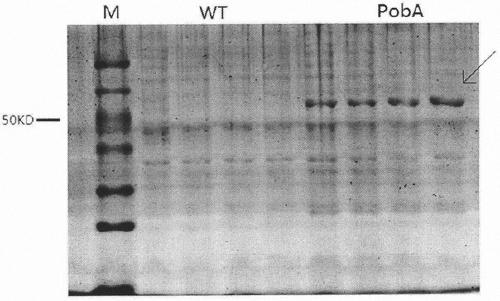Gene engineer bacterium for producing protocatechuic acid (3, 4-dihydroxybenzoic acid) by using phenol and construction method thereof
A technology of dihydroxybenzoic acid and genetically engineered bacteria, which is applied in the directions of genetic engineering, microorganism-based methods, biochemical equipment and methods, etc., can solve the problem of not yet producing protocatechuic acid and the like
- Summary
- Abstract
- Description
- Claims
- Application Information
AI Technical Summary
Problems solved by technology
Method used
Image
Examples
Embodiment 1
[0023] A kind of construction that utilizes phenol as raw material to produce the genetically engineered bacterium EYP of protocatechuic acid (3,4-dihydroxybenzoic acid):
[0024] In vitro amplification of the target gene:
[0025] The genomes of Bacillus subtilis 168 and Pseudomonas aeruginosa PAO1 were extracted using a bacterial genome extraction kit, using SEQ ID NO.1 and SEQ ID NO.2 in the sequence table as upstream and downstream primers, and using the genome of Bacillus subtilis 168 as a template, The p-hydroxybenzoic acid decarboxylase gene yclBCD is obtained by PCR amplification, and the sequence of the gene yclBCD is shown in SEQ ID NO.5. Using SEQ ID NO.3 and SEQ ID NO.4 in the sequence table as upstream and downstream primers, and using the genome of Pseudomonas aeruginosa PAO1 as a template, the hydroxylase gene pobA is obtained by PCR amplification, and the sequence of the gene pobA is Shown in SEQ ID NO.6. The steps are: take 10ul of genome solution, 50μl of P...
Embodiment 2
[0031] Construction of conditions for producing protocatechuic acid in genetically engineered strain EYP
[0032] The constructed strain EYP was cultured in LB medium, and the setting parameters of the shaker were temperature 37°C and rotation speed 200rpm. When the OD600nm of the bacterial solution reached 0.6-0.8, it was induced by adding isopropylthiogalactoside (IPTG), and the final concentration of IPTG was 0.1mM, the shaker setting parameters are temperature 18°C, rotation speed 200rpm, induction time 15h, after which the bacteria are collected by centrifugation, and the collected bacteria are transferred into M9Y medium under sterile conditions for fermentation and culture, the shaker setting The parameters are temperature 30° C., rotation speed 200 rpm, and fermentation time 48 hours.
Embodiment 3
[0034] Hydroxylase expression identification
[0035] The cells were collected, centrifuged at 8000rpm for 10min, and the cells were taken in a boiling water bath at 100°C for 10min, followed by SDS-PAGE electrophoresis ( image 3 ). From image 3 Comparing the total protein of the constructed strain with the wild-type strain, it can be observed that the hydroxylase is expressed, and its size is 57KD.
PUM
 Login to View More
Login to View More Abstract
Description
Claims
Application Information
 Login to View More
Login to View More - R&D
- Intellectual Property
- Life Sciences
- Materials
- Tech Scout
- Unparalleled Data Quality
- Higher Quality Content
- 60% Fewer Hallucinations
Browse by: Latest US Patents, China's latest patents, Technical Efficacy Thesaurus, Application Domain, Technology Topic, Popular Technical Reports.
© 2025 PatSnap. All rights reserved.Legal|Privacy policy|Modern Slavery Act Transparency Statement|Sitemap|About US| Contact US: help@patsnap.com



